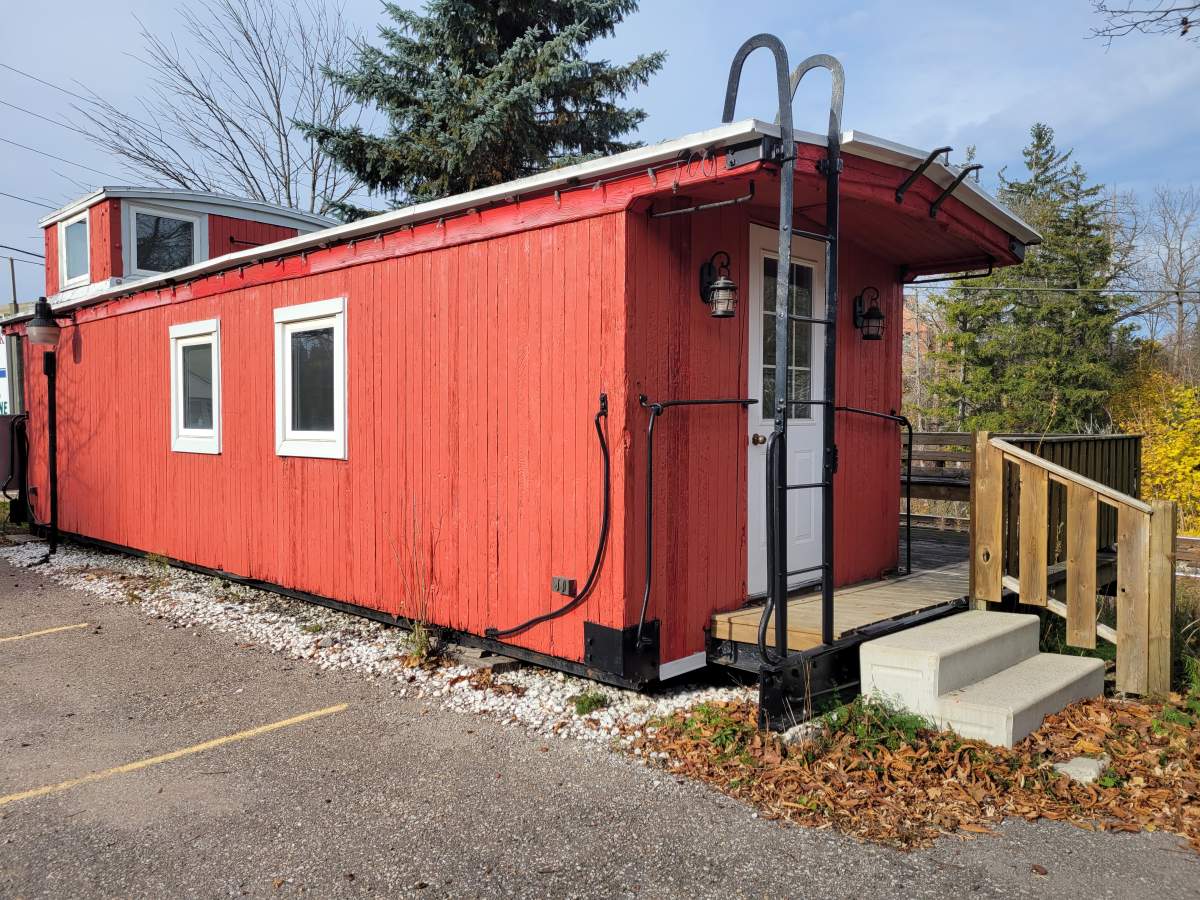Getting into the housing market in Ontario is not just a challenge for young people, but as Laurel Wynne recently learned with her purchase of a $45,000 caboose near Milton, you buy what you can afford in this market.

“It’s about living within my means and this was something that I could afford,” said the 64-year-old retiree.
Wynne, a former English teacher, recently purchased the 1912 caboose located in Campbellville, just west of Milton. The caboose was previously attached to trains and often served as an office for the conductor. According to the realtor, Jennifer Krane of Zoocasa, the caboose was previously owned by Canadian National Railway and dates back to 1912.
The structure is a small living space with ceilings that are six feet five inches, no bathroom and no kitchen. It currently sits in the parking lot of a Thai restaurant and a furniture store with railway tracks right behind it.
“I can hear the trains, the entire thing shakes,” Wynne said laughingly.
When the property came across Krane’s desk, she received nearly 50 offers over the five-month period it was up for sale, but most people wanted to convert it into an ice cream shop or small business. It had previously been owned by a limousine company that used it as an office space.
“Every single person that came to me had a different idea,” she said.

While Krane listed the home as “not suitable to live” due to its lack of basic necessities, she always thought she would find someone who could make it their home.
“I wasn’t selling it as a liveable place, there’s no sewage, running water, kitchens – it was kind of tricky to sell,” she said.

Get breaking National news
In came Wynne, who had just sold her previous property, a 1921 schoolhouse south of Bancroft, last February with the hopes of moving closer to her family in Oakville. But Wynne knew that Oakville was out of her budget and as she looked around, there were few affordable options for a single person.
“I don’t think putting up that kind of money at my age without a stable income could’ve worked, everything was too expensive. I doubt — no, I know I wouldn’t have passed the stress test,” she said.
According to the figures from the Toronto Real Estate Board, the average selling price of homes in April 2022 was $1,254,436, up by 15 per cent compared with April 2021.
Wynne said that unless she re-entered the workforce, there was really no shot she could afford a home at a higher price and that the mortgage would simply be too much. She noted that she was happy to downsize, as long as it meant she could keep a roof over her head and live comfortably.
“I am fine to live with what works and don’t need more than that, this feels right for me at this point in my life,” she said.

For Krane, the story of Wynne’s purchase is indicative of the current housing market, where buyers are struggling to get a foothold as prices continue to balloon. She said she’s seeing more people coming in on a property together, living in multi-generational homes or downsizing to tiny homes.
“It’s definitely a challenge, it’s a challenge to come up with creative ways for people to buy something,” Krane said. “It’s tricky to be living within our means right now, affordability on all fronts is tough and especially when buying a home.”
As Wynne renovates the home, she anticipated it will take several thousand dollars to get it in working condition, but noted she’s fine to take on those costs to make it liveable. Currently, she pays the owner of the commercially zoned lot $500 but is planning on relocating the caboose when it’s finished being renovated. In the interim, she plans to stay with friends, and during the winter has been offered to stay with friends when it gets too cold outside.









Comments